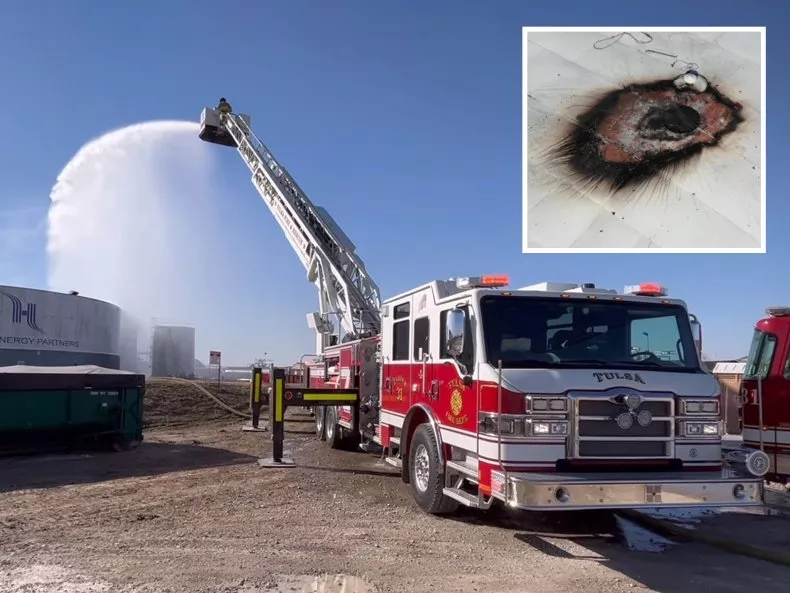A chemical fire in a storage tanker in an Oklahoma port has become the latest in a series of incidents across the U.S. in a matter of days.
Just before 9 a.m. local time (10 a.m. ET) on Wednesday, fire crews were alerted to the blaze at the Port of Catoosa, to the northeast of Tulsa. The port was evacuated, and a ‘shelter in place’ order given to nearby residents.
It is unclear what caused the fire, and whether it was toxic. Port officials told local media that they were unsure of what the tanker had contained. The Tulsa Fire Department said that it had been empty. Newsweek has contacted Holly Energy Partners, which owns the tanker, for comment.
David Yarbrough, the Port of Catoosa director, told Channel 8 News Tulsa that they had erred on the side of caution with the response. “We prepare for it,” he said. “[But] hope you don’t have it happen. Every now and then, something goes not according to plan, and you just react.”
The Fire Department wrote in a statement that the first crew to arrive on the scene reported “heavy smoke and flames from the top of the tank.” The local district chief took command of the port.
“The port management sent out a mass text to workers at the port to evacuate the area,” the statement added.
A hazardous materials team and supervisors from Holly Energy Partners were able to devise a plan to “darken down the fire from the bottom of the empty tank,” the Fire Department said. They relied on an elevated hose “to completely extinguish the fire.”
The site was returned to the company when thermal imaging showed the tanker had returned to “near-ambient temperature.”
The Tulsa Port Authority said evacuations were initiated “out of safety precaution and protocol.”
“Oklahoma Highway Patrol and Rogers County Sheriff’s Department assisted in evacuating vehicles from the port,” the authority noted.
The City of Catoosa identified the incident as a chemical fire, and said a northerly wind was “pushing it towards Catoosa,” a satellite city of Tulsa. It recommended locals to shelter in place, before this was lifted at around 10:30 a.m. local time (11:30 a.m. ET).
The suspected chemical fire in Oklahoma came just a day after a truck hauling 2,000 pounds of nitric oxide—a toxic substance that can be lethal if inhaled—crashed on Interstate 10, southeast of Tucson, Arizona.
Footage from the scene showed the upturned cargo truck spewing out bright orange fumes. It led to the evacuation of a half-mile radius and deployment of hazmat fire crews.
The incidents come less than two weeks after a train derailment on the border of Ohio and Pennsylvania on February 3. This produced a toxic release of chemicals into the air and surrounding environment.
Residents of East Palestine were evacuated so emergency responders could undertake a controlled burn of the vinyl chloride in five rail cars to avoid a massive explosion. However, it released the toxic gases hydrogen chloride and phosgene into the air.
Drone photos showing the remnants of the fire at the Port of Catoosa on February 15, 2023. The first crew to arrive on the scene reported “heavy smoke and flames from the top of the tank.”GABE GRAVELINE/TULSA FIRE DEPARTMENT
Since the spill, the Environmental Protection Agency detected several toxic substances in the soil and nearby waterways, including the Ohio River. Residents have complained of symptoms associated with exposure to contaminants.
According to Channel 8 News, Catoosa port director Yarbrough knew about the fears after the spill in Ohio, but stressed the necessity of toxic chemicals in industry.
“We manufacture goods and chemicals that make life better,” Yarbrough told the outlet. “And hopefully we learn to respect that things sometimes go bad, and we have plans in place to address it when they do. But this is what it takes to have the products and the quality of life that we’ve become accustomed to.”
Newsweek
Tags:Tank Fire




